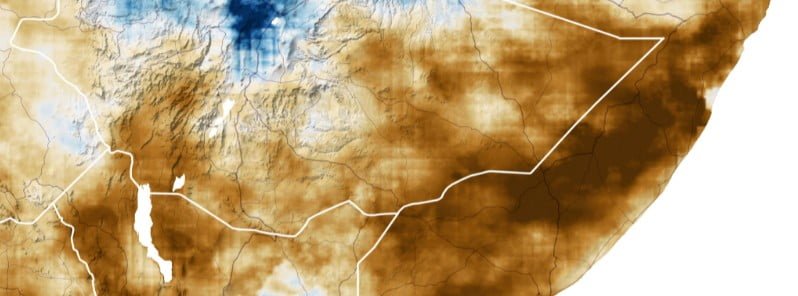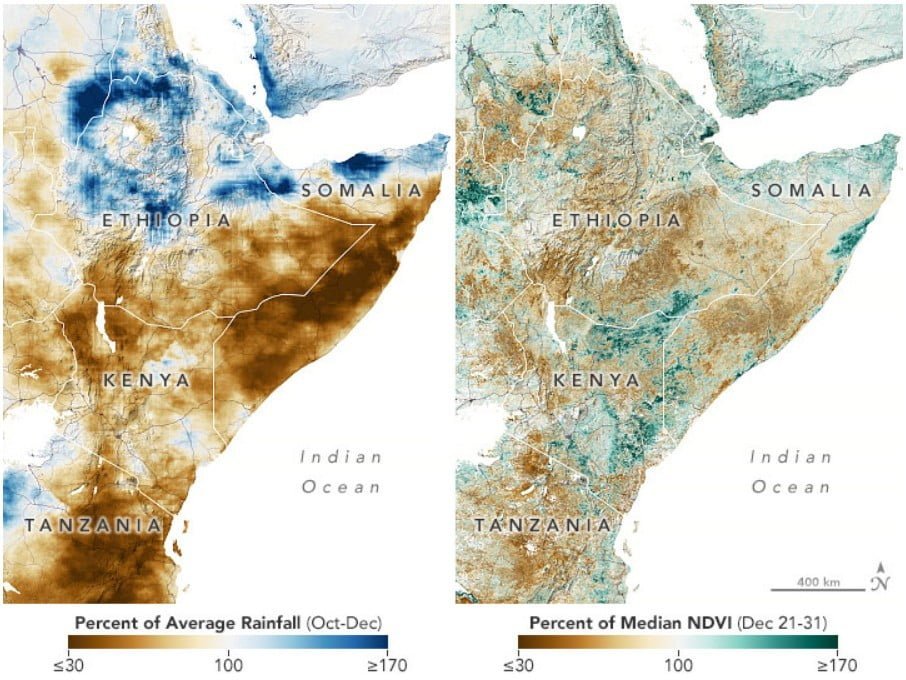Worst drought in 40 years affecting Kenya, Ethiopia and Somalia

The Horn of Africa is experiencing its fourth consecutive failed rainy season and the worst drought since 1981. At least 15 million people across Kenya, Ethiopia and Somalia are already affected and there are fears this number could jump to 20 million.
“The world’s attention is elsewhere, and we know that,” the United Nations Humanitarian Coordinator, Martin Griffiths, said during his last week’s visit to Kenya, where a severe drought is affecting more than 8 million people.
More than 7.2 million people in the country are in need of food aid, and some 4 million require water assistance. Some 3.5 million people are severely food insecure and acute malnutrition rates in some areas are more than double the emergency threshold.
Across the three aforementioned countries, roughly 5.7 million children are acutely malnourished.
Additionally, more than 3 million livestock have died.
With rains less than 60% of average across most of Kenya, widespread livestock deaths, minimal livestock productivity, very low cropping levels, and sharp declines in purchasing power are creating large food consumption gaps and high levels of acute malnutrition.
Unfortunately, forecast models are now predicting an elevated likelihood of yet another (the 5th) below average rain season for October – December rains, which will further escalate food needs.
Griffiths is urging the international community not to ignore the rapidly escalating crisis in the region. “We need urgent action to help these communities survive now, and increased investment in their ability to withstand future shocks… We need to give them a future.”

Tropical countries within the Horn of Africa tend to have two rainy seasons: the gu in March, April, and May, and the deyr in October, November, and December.3
The 2020 and 2021 deyr seasons were both substantially drier than normal, and the 2021 gu also came up short.
Levels of precipitation have been the lowest on record in some areas; the Shabelle-Juba river basins have seen their lowest rainfall totals since 1981.
References:
1 Relief chief underlines need for urgent support as millions face drought in Horn of Africa – UN News – May 13, 2022
2 Kenya – Drought, food and nutrition insecurity – DG ECHO – May 13, 2022
3 Failed Rainy Seasons Create Food Emergency in Eastern Africa – Earth Observatory – January 7, 2022
Featured image: NASA Earth Observatory images by Joshua Stevens, using data from the Climate Hazards Center, the Famine Early Warning System Network (FEWS Net), and modified Copernicus Sentinel data (2021) processed by the European Space Agency courtesy of Josh Willis/NASA/JPL-Caltech.

Commenting rules and guidelines
We value the thoughts and opinions of our readers and welcome healthy discussions on our website. In order to maintain a respectful and positive community, we ask that all commenters follow these rules.